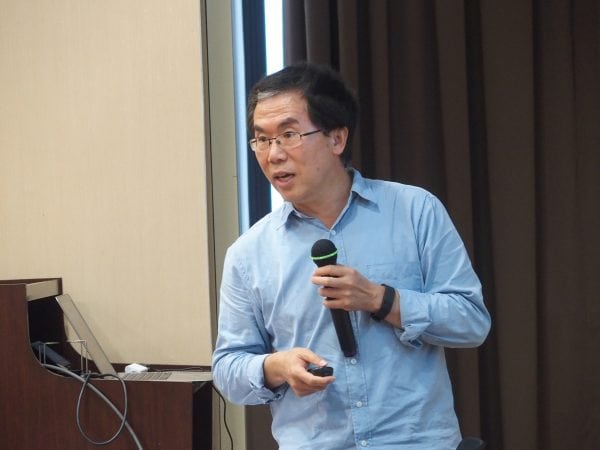| Talk title | Phenotype-based discovery of novel players in the IGF/Insulin-PI3K-Akt-Tor pathway using zebrafish |
| Speaker | Prof. Cunming DUAN Professor, Department of Molecular, Cellular & Developmental Biology, University of Michigan |
| Date & Time | 10 November 2017 (Friday) 15:00-16:00 |
| Venue | Room G004, E12 Building (University of Macau) |
| Abstract | The evolutionarily ancient insulin/insulin-like growth factor (IIS)-PI3K-Akt-Tor signaling pathway plays key roles in regulating animal development, growth, metabolism, and aging. Aberrant regulation of this pathway is linked to major human diseases, and key components of this pathway are major targets for therapeutic intervention. Here we report the development of a phenotype-based whole organism platform for assaying the action of the IIS-PI3K-Akt-Tor signaling in zebrafish epithelial cells and the discovery of a novel mechanism underlying the Ca2+ deficiency-induced IIS signaling and epithelial proliferation. Zebrafish embryos and larvae uptake Ca2+ from the surrounding water using a group of epithelial cells known as NaR cells. These cells are functionally equivalent to human intestinal epithelial cells. NaR cells are located on the surface of the yolk sac, making them easily accessible to experimental manipulations and observation. NaR cells specifically express Igfbp5a, a high-affinity and specific binding protein for IGFs. We have developed a zebrafish transgenic line, Tg(igfbp5a:GFP), which expresses GFP under the control of the igfbp5a promoter. Using this unique model, we have discovered that low [Ca2+] stress re-activates a mitotic program in differentiated NaR cells and stimulates them to re-enter cell cycle. Low [Ca2+] stress results in a robust and sustained activation of the IIS-PI3K-Akt signaling in these cells. Pharmacological blockage of IGF1R/IR, PI3K, Akt, and Tor abolishes Ca2+ deficiency-induced NaR cell proliferation. Therefore, Tg(igfbp5a:GFP) faithfully reports the mitotic action of IIS-PI3K-Akt-Tor signaling in epithelial cells. We performed a phenotype-based chemical biology screen using this whole organism platform. Among several hits are several inhibitors of Trpv5/6, a selective Ca2+ channel. Further analyses suggest that blockade of Trpv5/6 activity inhibits the low [Ca2+]-induced IIS signaling and NaR cell proliferation. Interestingly, blockade or knockout of Trpv5/6 results in elevated IIS signaling and increased cell proliferation under normal [Ca2+]. These increases are eliminated in the presence of an IGF1R inhibitor. These data suggest that Trpv5/6 plays dual roles: it represses IIS-PI3K-Akt signaling in NaR cells under normal [Ca2+], whereas it strongly activates IIS-PI3K-Akt signaling in the same NaR cells under low [Ca2+]. Importantly, this new signaling mechanism is conserved in human colon cancer cells. These results uncover a novel and evolutionarily conserved signaling mechanism that contributes to the abnormal epithelial growth induced by Ca2+ deficiency. |


